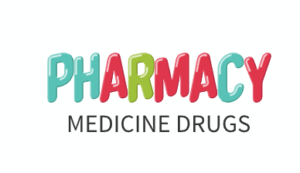Treatment of Cardiac Heart failure | Clinical Manifestations | Drugs Used For Heart Attack
The most common manifestation of left ventricular failure is dyspnoea, or a sense of breathlessness. This is caused predominantly by decreased lung compliance resulting from pulmonary edema and congestion, and by increased activity of autonomic stretch receptors
within the lung. Dyspnoea is most noticeable during periods of physical activity. It is also prominent when the person is lying down (Orthopnoea), because of the increased amount of venous blood returned to the thorax from the lower extremities and because the
diaphragm is elevated in this position. Paroxysmal nocturnal dyspnea is an especially dramatic form of dyspnea that awakens the patients with sudden severe shortness of breath, accompanied by coughing, a chocking sensation, and wheezing. Other manifestations of left ventricular failure include muscle fatigue, an enlarged heart, tachycardia, a third heat sound and fine edematous pulmonary alveoli. With progressive ventricular dilation, the papillary muscles are displaced laterally, causing mitral regurgitation and a high pitched systolic murmur. Chronic dilation of the left atrium may also occur and it is often associated with the development of atrial fibrillation manifested by an irregular heartbeat.
As CHF progresses, patients may become frankly cyanotic and acidotic owing to decreased tissue perfusion. Ventricular arrhythmias caused by myocardial irritability and over activity of the sympathetic nervous system are common and are an important cause of sudden death in this setting.
Fluid Retention and Swelling:
- Puffy swelling (edema) in the legs, the feet, and the ankles may occur, particularly at the end of the day or after prolonged sitting. Often, the swelling is more noticeable in the ankles or on the lower leg in the front where the bone, the tibia, is close to the skin.
- Pitting edema can occur when pressing down on the skin in the puffy areas. The indentation where the finger pressed may be visible for a few minutes. Pitting edema is not synonymous with heart failure; it can have other causes,including liver and kidney failure.
Nonpitting edema is generally not caused by heart failure.
- Swelling may be so severe as to reach upto the hips, scrotum, abdominal wall, and eventually, the abdominal cavity (ascites).
- Daily weight checks are necessary in persons with heart failure because the amount of fluid retention is usually reflected by the amount of weight gain and increasing shortness of breath. Persons with heart failure should know their dry weight, which is what they weigh when they feel good with no pitting edema.
Treatment of Congestive Cardiac Failure | Medication for Congestive Cardiac Heart Failure (CCHF)
Treatment of Congestive Cardiac Failure is focused on improving the symptoms and preventing the progression of the disease. The major and often neglected form of treatment is lifestyle improvement, which includes:
-
Regulation of the salt and fluid intake: As the entire body suffers from congestion due to fluid accumulation and also that sodium leads to increased fluid accumulation in the body tissues, it is often recommended to restrict the sodium and fluid intake during the cardiac failure.
-
Exercise: It is recommended to do any activity which one can sustain for more than just a few minutes while your heart, lungs and muscles work overtime. Such an exercise is known as aerobic exercise. Regular exercise, according to the patient’s tolerance level, appears to provide significant benefits and should be used only when the patient is compensated and stable
Pharmacological treatment of CHF involves the use of following category of medications:
(a) Inotropic Drugs:
- i. Cardiac glycosides: The digitalis glycosides are used due to its positive inotropic effect and negative chronotropic effect e.g. Digoxin, digitoxin etc.
- ii. Sympathomimetic amines: e.g. Dopamine dobutamine.
- iii. Phosphodiesterase enzyme inhibiters: Amrinone and milrinone
b) ACE inhibitors: These agents act by inhibiting the Angiotensin converting
enzyme which is responsible for conversion of Angiotensin I (inactive) to Angiotensin II (active). ACE Inhibitors improve symptoms, decrease mortality and reduce ventricular hypertrophy. E.g: Candesartan.
c) Diuretics: These removes excess extracellular fluid in patients with systolic or diastolic heart failure.
- Loop diuretics: Furesemide
- Potassium sparing diuretics: Amiloride
- Thiazide diuretics: Chlorthiazide, Hydrochlorthiazide

